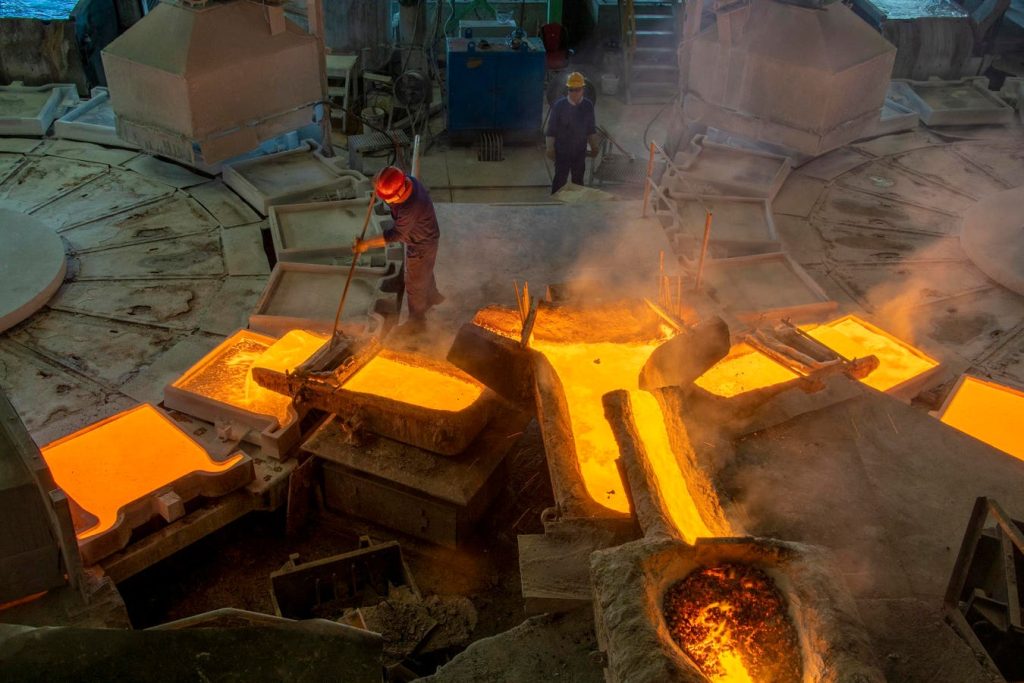The whispers of a potential $160 billion merger between mining giants Rio Tinto and Glencore, aimed at capturing a larger share of the metals market, appear to be fading into silence, mirroring the unsuccessful $50 billion bid by BHP for Anglo American last year. Despite sparking speculation in financial markets, the proposed deal has been met with a lukewarm reception from investors and faces significant regulatory hurdles. While neither company has officially confirmed the discussions, the initial market reaction was negative, with Rio Tinto’s share price dipping upon the news. The proposed merger echoes a broader trend in the mining industry – a shift away from traditional bulk commodities like iron ore and coal towards metals crucial for the energy transition, such as copper and lithium.
The potential merger of Rio Tinto and Glencore, while ambitious in scale, presents a series of challenges that make its success unlikely. Similar to BHP’s pursuit of Anglo American, which faced resistance due to its potential impact on the South African economy, a Rio Tinto-Glencore tie-up would likely trigger extensive government scrutiny, particularly from China. As the world’s largest consumer of copper, China would be understandably cautious about a merger that could consolidate control over a significant portion of the global copper market, potentially affecting supply and pricing. Other countries involved in the energy transition, which rely heavily on copper for its electrical conductivity, would also closely scrutinize the deal, further complicating its prospects.
The driving force behind this proposed merger, and the earlier BHP-Anglo American bid, appears to be the evolving landscape of the mining industry. The traditional focus on bulk commodities like iron ore and coal is gradually giving way to a growing demand for metals critical to new energy technologies. Copper, essential for electric vehicles and renewable energy infrastructure, and lithium, a key component of batteries, are becoming increasingly valuable. This shift is pushing mining companies to reposition themselves for the future, seeking to secure a larger share of these critical materials. The proposed merger would create a combined entity controlling 7% of the global copper market, positioning it to capitalize on this growing demand.
However, the path to a successful merger is fraught with obstacles. Beyond regulatory hurdles, Rio Tinto would likely face resistance from its own shareholders, given Glencore’s significant coal holdings. Rio Tinto divested its coal assets four years ago, signaling a commitment to a cleaner energy future. Merging with a major coal producer would contradict this strategy and potentially alienate investors focused on environmental, social, and governance (ESG) factors. While Glencore has considered spinning off its coal assets in the past, such a move would be complex and time-consuming, with no guarantee of a satisfactory outcome.
Furthermore, the strategic rationale for the merger remains questionable. Analysts point to the limited overlap between Rio Tinto and Glencore’s operations, suggesting that the potential synergies from the deal would primarily stem from asset diversification and increased scale, rather than cost savings or operational efficiencies. This raises doubts about the overall value creation of the merger, potentially making it difficult to justify to shareholders. The lack of clear strategic benefits, coupled with the significant regulatory and shareholder headwinds, makes a successful merger highly improbable.
In conclusion, the proposed Rio Tinto-Glencore merger, while potentially transformative for the mining industry, faces a daunting array of challenges. Government scrutiny, particularly from China, concerns over market concentration in key metals like copper, shareholder resistance to Glencore’s coal assets, and the lack of clear strategic synergies all contribute to the skepticism surrounding the deal. The current market reaction, coupled with the complexities involved in navigating these obstacles, suggests that this ambitious merger is unlikely to materialize. This failed attempt, like BHP’s pursuit of Anglo American, highlights the difficulties of consolidating in the rapidly evolving mining sector, where the focus is shifting towards the metals of the future and ESG considerations are increasingly influential.










